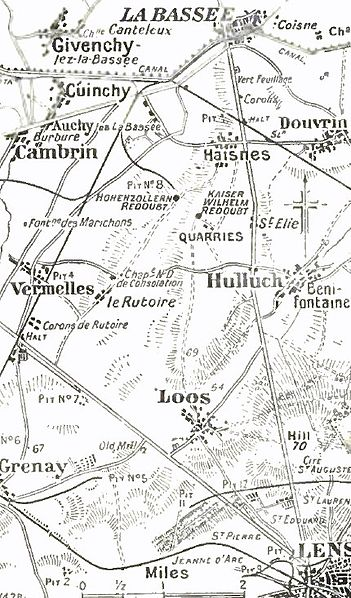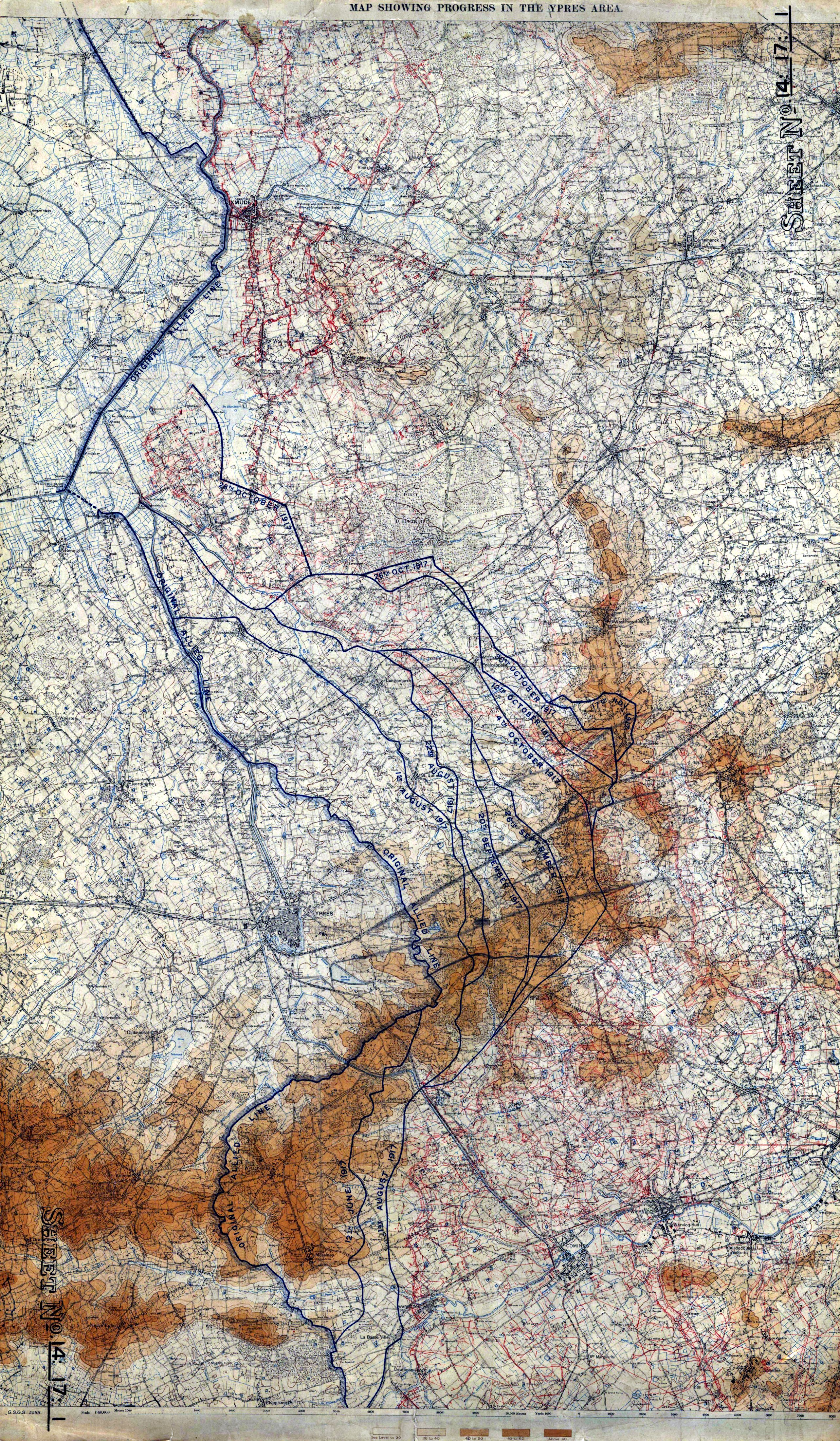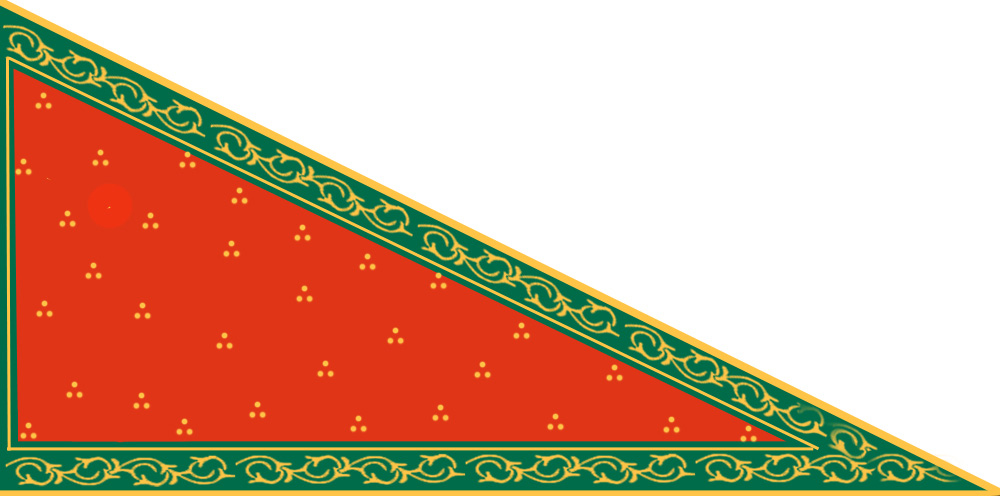|
Charles Astley Fowler
Major-General Charles Astley Fowler, CB, CSI, DSO (9 November 1865 – 7 January 1940) was an officer in the British Indian Army from 1886 to 1921, serving in both India and Europe. He commanded the 37th Brigade at the Battle of Loos in France in 1915 and was a Divisional Commander during the Third Afghan War in 1919. Early life Charles Fowler was born near Lahore, Punjab, British India, the son of Deputy Surgeon-General Henry Day Fowler of the Indian Medical Service and Caroline Mary Oliver.''India, Select Births and Baptisms, 1786–1947'' Charles also had an older brother, Francis John Fowler, who also became a high-ranking Officer in the Indian Army. He was educated in England at Bedford Modern School, where he was in the first XV, and the Royal Military Academy Sandhurst and was commissioned into the Devonshire Regiment as a lieutenant on 7 February 1885. Early career In 1886 Fowler transferred to the Indian Army and joined the 22nd Punjabis based at Moltan, ... [...More Info...] [...Related Items...] OR: [Wikipedia] [Google] [Baidu] |
Major General
Major general (abbreviated MG, maj. gen. and similar) is a military rank used in many countries. It is derived from the older rank of sergeant major general. The disappearance of the "sergeant" in the title explains the apparent confusion of a lieutenant general outranking a major general, whereas a major outranks a lieutenant. In the Commonwealth of Nations, Commonwealth and in the United States, when appointed to a field command, a major general is typically in command of a Division (military), division consisting of around 6,000 to 25,000 troops (several regiments or brigades). It is a two-star general, two-star rank that is subordinate to the rank of lieutenant general and senior to the rank of brigadier or brigadier general. In the Commonwealth, major general is equivalent to the navy rank of rear admiral. In air forces with a separate rank structure (Commonwealth), major general is equivalent to air vice-marshal. In some countries including much of Eastern Europe, major ... [...More Info...] [...Related Items...] OR: [Wikipedia] [Google] [Baidu] |
Lieutenant (British Army And Royal Marines)
Lieutenant (; Lt) is a junior officer rank in the British Army and Royal Marines. It ranks above second lieutenant and below captain and has a NATO ranking code of OF-1 and it is the senior subaltern rank. Unlike some armed forces which use first lieutenant, the British rank is simply lieutenant, with no ordinal attached. The rank is equivalent to that of a flying officer in the Royal Air Force (RAF). Although formerly considered senior to a Royal Navy (RN) sub-lieutenant, the British Army and Royal Navy ranks of lieutenant and sub-lieutenant are now considered to be of equivalent status. The Army rank of lieutenant has always been junior to the Navy's rank of lieutenant. Usage In the 21st-century British Army, the rank is ordinarily held for up to three years. A typical appointment for a lieutenant might be the command of a platoon or troop of approximately thirty soldiers. Before 1871, when the whole British Army switched to using the current rank of "lieutenant", the Roy ... [...More Info...] [...Related Items...] OR: [Wikipedia] [Google] [Baidu] |
Hohenzollern Redoubt
The Hohenzollern Redoubt () was a strongpoint of the German 6th Army on the Western Front during the First World War, at Auchy-les-Mines near Loos-en-Gohelle in the Nord-Pas-de-Calais region of France. Named after the House of Hohenzollern, the redoubt was fought for by German and British forces. Engagements took place from the Battle of Loos to the beginning of the Battle of the Somme on 1 July 1916, including the action of the Hohenzollern Redoubt in 1915 and the British Attack at the Hohenzollern Redoubt from 2 to 18 March 1916. Background In the summer of 1915 the German armies continued the strengthening of front trenches, communication trenches and strong-points ordered by Chief of the General Staff General Erich von Falkenhayn, who on 25 January had also ordered the building of more defensive lines behind the front trench. Crown Prince Rupprecht the Sixth Army commander and some Western Front generals had objected to this policy, as an invitation to German troops ... [...More Info...] [...Related Items...] OR: [Wikipedia] [Google] [Baidu] |
Robert Graves
Captain Robert von Ranke Graves (24 July 1895 – 7 December 1985) was a British poet, historical novelist and critic. His father was Alfred Perceval Graves, a celebrated Irish poet and figure in the Gaelic revival; they were both Celticists and students of Irish mythology. Graves produced more than 140 works in his lifetime. His poems, his translations and innovative analysis of the Greek myths, his memoir of his early life—including his role in World War I—''Good-Bye to All That'', and his speculative study of poetic inspiration ''The White Goddess'' have never been out of print. He is also a renowned short story writer, with stories such as "The Tenement" still being popular today. He earned his living from writing, particularly popular historical novels such as ''I, Claudius''; '' King Jesus''; ''The Golden Fleece''; and ''Count Belisarius''. He also was a prominent translator of Classical Latin and Ancient Greek texts; his versions of ''The Twelve Caesars'' and ... [...More Info...] [...Related Items...] OR: [Wikipedia] [Google] [Baidu] |
Ypres Salient
The Ypres Salient around Ypres in Belgium was the scene of several battles and an extremely important part of the Western front during the First World War. Ypres district Ypres lies at the junction of the Ypres–Comines Canal and the Ieperlee. The city is overlooked by Kemmel Hill in the south-west and from the east by low hills running south-west to north-east with Wytschaete (Wijtschate), Hill 60 to the east of Verbrandenmolen, Hooge, Polygon Wood and Passchendaele (Passendale). The high point of the ridge is at Wytschaete, from Ypres, while at Hollebeke the ridge is distant and recedes to at Polygon Wood. Wytschaete is about above the plain; on the Ypres–Menin road at Hooge, the elevation is about and at Passchendaele. The rises are slight, apart from the vicinity of Zonnebeke, which has a From Hooge and to the east, the slope is near Hollebeke, it is heights are subtle but have the character of a saucer lip around Ypres. The main ridge has spurs sloping east an ... [...More Info...] [...Related Items...] OR: [Wikipedia] [Google] [Baidu] |
Ploegsteert Wood
Ploegsteert Wood was a sector of the Western Front in Flanders in World War I, part of the Ypres Salient. It is located around the Belgian village of Ploegsteert, Wallonia. After fierce fighting in late 1914 and early 1915, Ploegsteert Wood became a quiet sector where no major action took place. Units were sent here to recuperate and retrain after tougher fighting elsewhere and before returning to take part in more active operations. British Tommies referred to Ploegsteert Wood as "''Plugstreet Wood''". From January to May 1916, Winston Churchill served in the area as Commanding Officer (Lieutenant-Colonel) of the 6th Battalion of the Royal Scots Fusiliers. There are numerous Commonwealth War Graves Commission (CWGC) cemeteries and memorials around the wood, including the Hyde Park Corner (Royal Berks) CWGC Cemetery and the Berks CWGC Cemetery Extension with the Ploegsteert Memorial to the Missing. The Ploegsteert Memorial commemorates more than 11,000 British and Empire ser ... [...More Info...] [...Related Items...] OR: [Wikipedia] [Google] [Baidu] |
Kitchener's Army
The New Army, often referred to as Kitchener's Army or, disparagingly, as Kitchener's Mob, was an (initially) all-volunteer portion of the British Army formed in the United Kingdom from 1914 onwards following the outbreak of hostilities in the First World War in late July 1914. It originated on the recommendation of Herbert Kitchener, then the Secretary of State for War to obtain 500,000 volunteers for the Army. Kitchener's original intention was that these men would be formed into units that would be ready to be put into action in mid-1916, but circumstances dictated the use of these troops before then. The first use in a major action of Kitchener's Army units came at the Battle of Loos (September–October 1915). Origins Contrary to the popular belief that the war would be over by Christmas 1914, Kitchener predicted a long and brutal war. He believed that arrival in Europe of an overwhelming force of new, well-trained and well-led divisions would prove a decisive blow agai ... [...More Info...] [...Related Items...] OR: [Wikipedia] [Google] [Baidu] |
12th (Eastern) Division
The 12th (Eastern) Division was an infantry division raised by the British Army during the First World War from men volunteering for Kitchener's New Armies. The division saw service in the trenches of the Western Front from June 1915 to the end of the war. Formation and First World War The 12th (Eastern) Division, was one of the first Kitchener's Army divisions raised from volunteers by Lord Kitchener. It was formed within Eastern Command as a result of Army Order No. 324 of 21 August 1914, as part of the K1 wave of divisions. It fought on the Western Front for the duration of the First World War. One of its most notable actions was the Battle of Épehy where there is a memorial cross to the 12th Division. In the First World War, the division's insignia was the Ace of Spades, which has since been adopted by the present 12th Armoured Infantry Brigade. Order of Battle 35th Brigade * 7th (Service) Battalion, Norfolk Regiment * 7th (Service) Battalion, Suffolk Regime ... [...More Info...] [...Related Items...] OR: [Wikipedia] [Google] [Baidu] |
Kurram Agency
Kurram District ( ps, کرم ولسوالۍ, ur, ) is a district in Kohat Division of Khyber Pakhtunkhwa province in Pakistan.The name Kurram comes from the river Kuramá ( ps, کورمه) in Pashto which itself derives from the Sanskrit name Krumuḥ (). Until 2018, it was an agency of Federally Administered Tribal Areas, with merger of FATA with Khyber Pakhtunkhwa, it became a district. Geographically, it covers the Kurram Valley region which is a valley in the northwestern part of Pakistan. Most of the population is Pashtun and the main religion is Islam (Shia and Sunni). Major tribes living in Kurram Agency are Bangash, Turi, Orakzai, as well as Mamozai, Muqbil, Zazai, Paracha, Mangal, Ghilzai, Para Chamkani, Hazara and Khoshi tribe (Persian speaking tribe). Until the year 2000, when the old divisions were abolished, the Kurram District used to be part of the Peshawar Division of the North-West Frontier Province of Pakistan. Description The name Kurram comes from the ri ... [...More Info...] [...Related Items...] OR: [Wikipedia] [Google] [Baidu] |
Kohat
Kohat ( ps, کوهاټ; ur, ) is a city that serves as the capital of the Kohat District in Khyber Pakhtunkhwa, Pakistan. It is regarded as a centre of the Bangash tribe of Pashtuns, who have lived in the region since the late 15th century. With a population of over 220,000 people, the city is the fourth-largest in Khyber Pakhtunkhwa and the 35th-largest in Pakistan in terms of population. Kohat's immediate environs were the site of frequent armed skirmishes between British colonialist forces and local tribesmen in the mid to late 19th century. It is centred on a British-era fort, various bazaars, and a military cantonment. Pashto and the Kohati dialect of Hindko are the main languages spoken in Kohat. The city of Kohat is also the namesake of and largest city in the Kohat Division, being over four times larger than the second-largest city in the division: Karak. History Early history Little is known of Kohat's early history. According to local lore, Kohat wa ... [...More Info...] [...Related Items...] OR: [Wikipedia] [Google] [Baidu] |
Punjab Army
The Sikh Khalsa Army (), also known as Khalsaji or simply Sikh Army, was the military force of the Sikh Empire. With its roots in the Khalsa founded by Guru Gobind Singh, the army was later modernised on Franco-British principles by Maharaja Ranjit Singh.''The Sikh Army 1799–1849'' By Ian Heath, Michael Perry It was divided in three wings: the Fauj-i-Khas (elites), Fauj-i-Ain (regular force) and Fauj-i-Be Qawaid (irregulars). Due to the lifelong efforts of the Maharaja and his European officers, it gradually became a prominent fighting force of Asia.''History of the Punjab'' by Prof Manjeet Singh Sodhi ) Ranjit Singh changed and improved the training and organisation of his army. He reorganized responsibility and set performance standards in logistical efficiency in troop deployment, manoeuvre, and marksmanship. He reformed the staffing to emphasize steady fire over cavalry and guerrilla warfare, improved the equipment and methods of war. The military system of Ranjit Singh c ... [...More Info...] [...Related Items...] OR: [Wikipedia] [Google] [Baidu] |
Captain (BARM)
Captain (Capt) is a junior officer rank of the British Army and Royal Marines and in both services it ranks above lieutenant and below major with a NATO ranking code of OF-2. The rank is equivalent to a lieutenant in the Royal Navy and to a flight lieutenant in the Royal Air Force. The rank of captain in the Royal Navy is considerably more senior (equivalent to the Army/RM rank of colonel) and the two ranks should not be confused. In the 21st-century British Army, captains are often appointed to be second-in-command (2IC) of a company or equivalent sized unit of up to 120 soldiers. History A rank of second captain existed in the Ordnance at the time of the Battle of Waterloo. From 1 April 1918 to 31 July 1919, the Royal Air Force maintained the junior officer rank of captain. RAF captains had a rank insignia based on the two bands of a naval lieutenant with the addition of an eagle and crown above the bands. It was superseded by the rank of flight lieutenant on the followin ... [...More Info...] [...Related Items...] OR: [Wikipedia] [Google] [Baidu] |






_-_Walters_W5967A_-_Full_Page.jpg)
